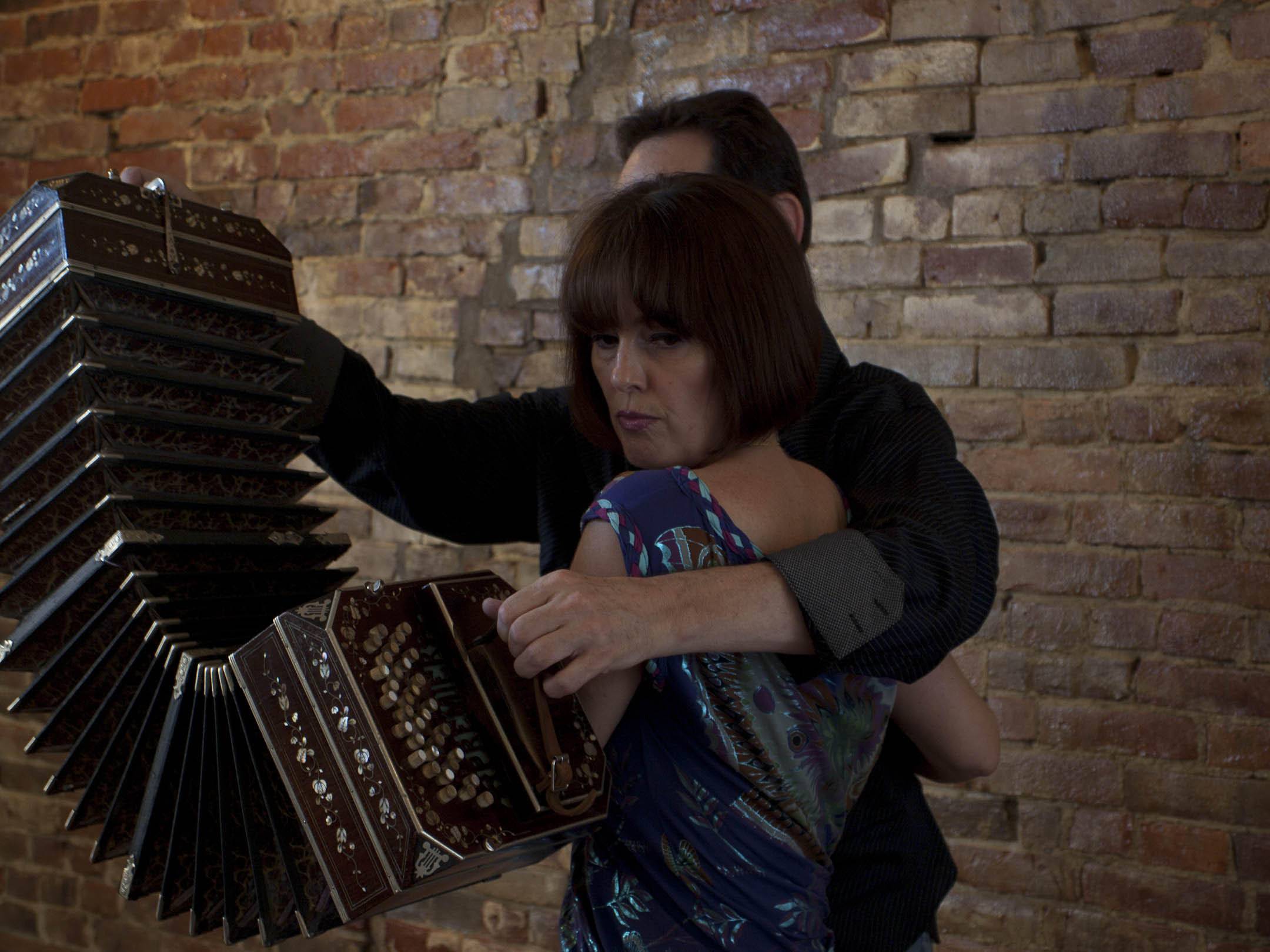On August 26th, the Champaign Park District kicks off its fall schedule of dance classes for adults with an introductory tango class. The instructors, Joe Grohens and Carlota Bullard, have been fixtures of the local tango community for many years, so we tracked them down to learn more about this Argentinian dance.
Smile Politely: The popular perception of tango is very athletic and overtly sexual, often involving skimpy, backless dresses and men being extremely “handsy” with their partners. Is this how you would describe tango? If not, how would you describe it?
Joe Grohens: Yeah, I know what you mean. On TV and in movies you often see tango as some sexual melodramatic cliché. Choreographers love to depict male-female dramatic situations through tango dancing. And the marketing usually goes something like, “Tango, the forbidden dance of passion.” And the tango scenes are often a perverse blend of squalor and glamour.
Well, that’s a fictional representation.
My idea of going to a tango dance is that when you walk in they have great music on the sound system, and a spacious and clean dance floor. The dancers all have some prior training and ability. They dress up and are attuned to a heightened aesthetic. They politely take turns dancing with each other. Nobody gets thrown to the floor, or tossed over anyone’s shoulders. Ha ha.
Carlota Bullard: Tango is multifaceted and this commercial cliche is only one facet. You have to know that historically tango music came first. Then came the tango as a social dance. Theatrical productions came later. I would not consider the commercial images and cliches to embody accurate descriptions of tango. They are rather, appropriations of tango.
The essence of tango exists in the social dancing of the tango (aka the Milonga: A social gathering of people who come together to enjoy an evening of socializing, listening to tango music, watching the tango dancers and participating in the dancing.) It is a ritual, of sort.
Typically, at the best Milongas world-wide, the men and women dress in their most elegant or trendy, chic attire in accordance to the fashion of a particular venue. But the skimpy dresses, sequins and “handsy” guys creating drama would not be the norm nor sign of a good tango dance.
SP: What do you find personally rewarding about tango? What makes you love it enough to teach it to others?
Bullard: For me, as a former classical ballet and modern concert dancer, I find the tango a perfect combination of skill and creative improvisation. I love the music and the opportunity to express myself in this medium.
I have had the good fortune to study with many exceptional teachers in the field of ballet, modern dance and tango dance. Never did I imagine that I would be able to follow in their footsteps. But somehow, teaching tango allows me to pass along a great tradition of teaching people to connect their bodies [with] their brains enabling them [to] produce a dance, with another person, to the tango music which is completely original and personally expressive. I love to see a person, who may have no dance skill or training, achieve the ability to create a dance on the floor with any man or any woman they choose. I do love that.
Grohens: I think a common trait among tango dancers is an inner poetic or creative urge that the dance provides an outlet for. In my case, I’m into music, and I personally think tango music has incredible depth and beauty. The tango dance style provides many resources for musical expression through movement. Also, there is no end to the new things you can discover and learn in tango, so it is truly a lifelong hobby.
Teaching it comes with the territory — tango is something that you can’t do alone (like the song says). Also, I am fascinated by the learning process, and I know that anyone can do this dance.
SP: You’ve been teaching tango in the C-U area for over 10 years, and you’ve been dancing for longer than that. Have you seen changes in the culture of tango over those years? If so, what are they? If not, why do you think that is?
Bullard: For the most part, C-U is a very transient community due to the nature of the university. Part of the demographic are long-time residents, but a larger demographic is transient and the social scene changes every few years. A large number of experienced dancers move away and new dancers arrive on the scene. The quality of the dancing is determined by the expertise of the dancers, so this is always in a state of flux. Nevertheless, the quality of dancing seems to gradually increase over the years.
Grohens: The main evolution in tango culture in C-U is that as time goes by the veteran tango dancers become better and better. The dancing quality is steadily on an upswing. When new dancers come into the scene now, they benefit from the ability and experience of the “seasoned” dancers.
 SP: What’s your advice to someone who’s completely new to tango and wants to try it out?
SP: What’s your advice to someone who’s completely new to tango and wants to try it out?
Bullard: Like any art form, my advice would be to find a good teacher. Listen to tango music. And have patience with yourself and others.
Grohens: Don’t be afraid to make mistakes. It’s simpler than it looks. And we make it easy to get started.
SP: What should students expect from your Tango Quick Start course with the park district later this month?
Bullard: Students will acquire the knowledge and tools it takes to construct a 3 minute tango. They will be able to experience first hand what it takes to craft a tango dance. They will be able to understand the meaning of dancing a tango beyond the commercial cliche.
Grohens: The beginning dancers have fun and feel that they are dancing right away.
After this course, they will already know the core moves that they will keep using and improving for as long as they continue dancing tango.
———
The six-week Champaign Park District Tango 1 – Tango Quick Start class is $60 for Champaign residents or $90 for non-residents. Interested in more tango events in the area? Joe and Carlota’s website includes a calendar of local milongas and other tango events.








